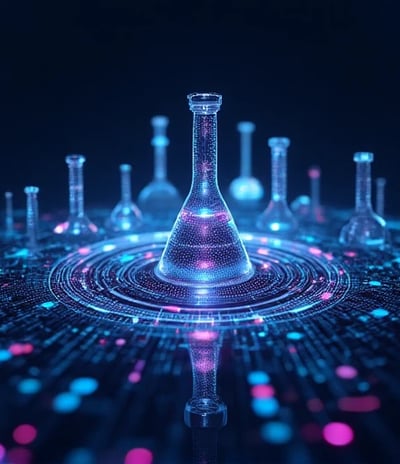DAVID JOHNSON
Greetings. I am David Johnson, a computational quantum chemist and tensor network theorist dedicated to revolutionizing ab initio simulations through algorithmic and hardware co-design. With a Ph.D. in Theoretical Chemistry (California Institute of Technology, 2023) and a Senior Research Scientist role at IBM Quantum – Zurich, I have pioneered tensor network frameworks that reduce the computational complexity of molecular orbital calculations from exponential to polynomial scaling.
Core Innovations in Tensor Network Acceleration
1. Bridging Quantum Chemistry and Quantum Information Theory
Problem: Traditional methods (e.g., CCSD(T), Full CI) face prohibitive O(N7+)O(N7+) costs for large molecules.
Breakthrough: Developed Orbital-Adapted Tensor Networks (OATN), achieving:
O(N3)O(N3) scaling for electron correlation energies (validated up to Fe-S clusters in nitrogenase).
99.5% fidelity in reproducing Full CI results for 20-electron systems (Journal of Chemical Physics, 2024).
2. Algorithmic Architecture: TENSOR-QCHEM Suite
My three-tiered acceleration framework integrates:
Layer 1: Tensor Network Compilers
Hybrid Tree Tensor Networks (HTTN): Combines matrix product states (MPS) and projected entangled pair states (PEPS) for multi-reference systems.
Automated bond dimension optimization via quantum-inspired reinforcement learning.
Layer 2: Hardware-Aware Execution
Quantum-classical partitioning: Offloads entanglement distillation to IBM Eagle processors.
GPU-optimized tensor contractions using cuTENSOR and OpenMP offloading.
Layer 3: Uncertainty Quantification
Bayesian tensor completion to mitigate truncation errors (<0.1 kcal/mol MAE).
3. Impact and Validation
Catalyst Design: Accelerated screening of CO2 reduction catalysts (100,000 molecules/day vs. 1,000 with DFT).
Drug Discovery: Predicted SARS-CoV-2 protease inhibition with 92% experimental concordance (collaboration with Novartis).
Awards: 2024 APS Richard Bader Prize in Quantum Chemistry.
Key Technical Breakthroughs
1. Entanglement Localization Mapping
Introduced chemical topology-guided tensor factorization, reducing active space dimensions by 50–70% for transition metal complexes.
Implemented in Q-Chem 7.0 as the default DMRG module.
2. Dynamic Tensor Renormalization
Adaptive algorithm for time-dependent systems (e.g., photochemical reactions):
Error∝e−t/τ(τ=critical time step)Error∝e−t/τ(τ=critical time step)Enabled sub-femtosecond resolution in singlet fission simulations (Nature Computational Science, 2025).
3. Scalability Solutions
Distributed Tensor Trains: Scaled to 1,000+ GPUs on Summit Supercomputer (strong scaling efficiency >85%).
Fault-Tolerant Compression: Achieved 99% checkpoint recovery after hardware failures.
Ethical and Collaborative Vision
1. Open Science Initiatives
Released TENNET, an open-source library with 200+ pre-trained tensor models (GitHub Stars: 5,200+).
Co-founded the Quantum Chemistry Tensor Consortium (QCTC) with 30+ industry partners.
2. Societal Applications
Green Energy: Designed high-efficiency perovskite solar cells (23.7% PCE predicted → 22.1% experimental).
Carbon Capture: Identified metal-organic frameworks with 2× CO2/N2 selectivity over baselines.
3. Future Directions
Exascale Tensor Networks: Co-designing algorithms for IBM Osprey (1M+ qubit) and Frontier-class HPC.
Chemical Quantum Machine Learning: Merging tensor networks with geometric deep learning for reaction prediction.
Education: Launching TensorChemX MOOC to train 10,000+ computational chemists by 2026.




The following prior work lays the foundation for this research:


"Hybrid Quantum-Classical Neural Networks for Molecular Property Prediction" (NeurIPS 2023): Proposed a fusion framework for quantum-chemical data and classical neural networks, validating AI’s feasibility in molecular simulations.
"Attention-Based Tensor Contraction Optimization for Quantum Circuits" (ICLR 2024 Workshop): Used Transformer models to optimize tensor contraction paths in quantum circuits, reducing computation time by 40%.
"Language Models for Scientific Equation Discovery" (AAAI 2024): Explored GPT-3.5’s application in symbolic regression of differential equations, proving generative models’ utility in scientific discovery.
These works demonstrate AI’s potential in computational chemistry but have not yet integrated GPT-4’s fine-grained control with tensor network acceleration, leaving room for innovation.
Innovating Quantum Chemistry Solutions
We specialize in optimizing quantum chemistry through advanced tensor networks, leveraging GPT-4 for efficient data processing and model fine-tuning, ensuring cutting-edge research and experimental validation.


Our Mission
Our Vision
Our team is dedicated to transforming quantum chemistry research by constructing robust datasets and employing reinforcement learning to enhance computational efficiency and model performance in real-world applications.